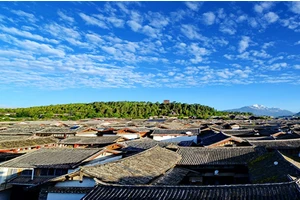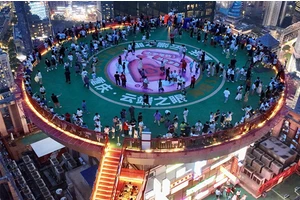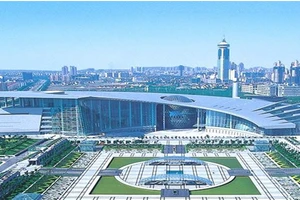Japanese tourism photography
Tokyo Sky Tree is already another good place for everyone to see the beautiful night in Tokyo. However, the admission fee for Sky Tree is two or three thousand yen, and there are so many people, so it may be crowded to go up! Actually, it depends on the night view. There are many good places in Tokyo. The developer of this App「Night View World "is a photographer. He visited all over Japan (really the whole country), photographed night scenes in different places, and arranged the information of scenic spots so that everyone can easily search for colorful night scenes all over Japan!
App is only in Japanese, and it's time for us to develop our ability to read Chinese characters. Photographers visit the whole country, but most of Hong Kong people travel to Tokyo, Kansai Osaka, Hokkaido and Okinawa in Kanto.
You can browse different scenic spots by choosing a good place. In addition to the general information, the developer also gives each place a thoughtful rating. "Beauty" is the degree of beautiful scenery, "beauty" is the atmosphere, and "beginner" is suitable for tourists who are unfamiliar with the road and find their way easily. Press the address to open Google Maps.
Click on the picture to enter the developer's web page, browse more beautiful night photos, and the developer has a web version, which is also very convenient to find beautiful scenery!
Download link:
Android: play.google/store/apps/details? id=.yakeiworld&hl=zh_TW
IOS: I have been crying and crying.
[Hard Wide] Finally, a hard wide, Japan's online card brought the biggest special price in history in August. Originally, I ate 999 yuan online for six days, and now it is 699 yuan (link). Friends who are ready to go to Japan and friends who want to go to Japan can buy this card!
Where can I buy a camera for Japan? Where to buy a camera in Japan is at least about 5000 yuan cheaper ~
How much cheaper is it to buy a camera in Japan than in China? I will travel to Japan in a few days. can I buy it in Japan?
There is no need to buy the 450D in Japan. If it is a high-end product, there are still some advantages, such as D3 and Bunny. It is not necessary for a few thousand dollars.
Is it cheap to buy a Canon SLR camera when traveling to Japan?
It will be a little cheaper than mainland China or Hong Kong, but I personally don't recommend buying a camera in Japan. Anyone familiar with cameras in the industry knows that there are some differences in model names and shapes between SLR sold in Japan and SLR sold in China, so it will be quite troublesome in terms of warranty. Canon in China can't directly repair SLR sold in Japan after sale, but it can only help you send it back to Japan for repair, so all the expenses incurred will be borne by you and the maintenance time will be long. In addition, there are SLR distribution centers in major cities in China now. If you are interested, you can find out by asking, just like Dashatou, Guangzhou, etc. Finding the right store to buy it will not be much more expensive than buying it in Japan, and the after-sales service is guaranteed. If you go to Suning, Gome, or Canon stores in big shopping malls, it will definitely be much more expensive.
This is what I know, I hope I can help you and hope to adopt it! It can be cheaper, but it can't be guaranteed when you return to China, and there are only bilingual menus in Japanese and English, but no Chinese.
However, you can buy an export version of SLR in a bonded shop with a multilingual menu and issue a customs duty-free certificate, which can be guaranteed in China. It's cheaper than in China, but China can't guarantee it. Just check the Amazon website in Japan, and you will know that Nikon and Canon lenses are not cheaper than those in China, and some of them are slightly more expensive. These are not including tariffs, freight and other expenses-Zeiss lenses are much cheaper than those in China, and a lens is still cheaper than two or three thousand yuan. It will be cheaper, but not much.
I am in Japan now, and I want to buy a camera in Japan recently. I wonder if there are any good models to recommend?
Let me recommend some models for you.
1. Panasonic lx3
The camera style is retro, made in Japan, with many manual functions, wide angle and good color.
CCD sensor (personally, CCD is better than COMS)
F2.0 large aperture (as far as I know, the largest among consumer-grade DC), Leica DC VARIO-SUMMICRON lens with a focal length of 24-60MM (Leica is made in the camera, SUMMICRON is the symbol of Leica's top lens), and lx3 lens is the highest image quality that can be achieved by the current card machine and even the whole consumer-grade DC, and can achieve 1CM super macro shooting.
In terms of frames, there are three kinds of frames with 4:3/3:2 and characteristics of 16:9 (there is only one kind of camera in general, mostly 4: 3), and C1/C2 personal shooting modes are added to the camera mode dial for the first time, which also reflects LX3' s efforts in fuselage specialization.
Tell me about my experience. I use lx2, which is an upgraded version of lx2. lx2 personally feels that taking pictures of landscapes and objects is better than portraits, and the pictures that the battery has been taking can be taken for one day.
This is about the evaluation of the card machine, so it can be seen that lx3 is a total victory.
2. Canon G11
Canon PowerShot G series, as a classic portable professional model series, has almost always been synonymous with "SLR standby machine" or "portable professional model".
For the rotatable LCD screen, G11 uses 1/1.7 inch CCD sensor size to reduce the number of pixels, so that the light receiving area of a single pixel is larger, the available sensitivity is also improved, and the natural noise reduction ability is also enhanced, which is also beneficial to the picture quality. With the DIGIC 4 image processing engine, it has achieved its "double noise reduction".
In terms of function, PowerShot G11 mainly improves the function of smart AUTO mode, strengthens the tracking shooting performance of moving portraits, and adds a fast shooting mode and a low light shooting mode.
Let me talk about my experience again. I personally feel that the portrait of Canon (classmate's) who has used the first generation of Canon PowerShot G series is still good, and the color is not as good as lx2 (it is estimated that G11 is not as good as LX3), but the biggest drawback lies in the battery problem, and there is no electricity display until it is almost used up, which leads to frequent going out without electricity, and other aspects are good. It seems that G11 is not sold in China at present, and it is estimated that it can be sold in Japan.
3.canon S90
Canon S90 is similar to lx3 in style, low pixels per inch sensor, F2.0 bright aperture, retro style and market positioning.
Canon S90 is equipped with a 1/1.7-inch CCD sensor with 1,000 effective pixels, which brings ultra-low pixels per inch and powerful noise control capability.
Canon S90' s F2.0 large aperture is undoubtedly a very attractive thing. Although it is not as shocking as Panasonic LX3GK 24mm in the wide-angle focal length, the focal length of 105mm at the telephoto end is obviously much more practical than the focal length of the latter in its early 60s.
The resolution of Canon S90 is slightly lower than we expected, especially at the 28mm wide-angle end of the camera. The level of 2000LW/PH is basically at the same level as other 10-megapixel machines, which does not reflect the superiority of high-end cameras. Compared with Panasonic LX3, under the same F2.0 condition, Canon S90 is inferior to Panasonic LX3 in lens sharpness.
The nearest focus distance is only 5cm, while lx3 can reach 1cm.
As for the battery, it is estimated that, like G11 above, Canon does not display the power.
4. Sigma DP1
DP1 is equipped with an APS-C Foveon X3 sensor. This makes it have the main potential to become a professional small camera. Compared with the GRD series digital cameras with the most SLR standby potential, the biggest advantage of DP-1 is that its APS-C format imaging sensor is much larger than the 1/1.7-inch CCD of the former.
In fact, except for the imaging sensor in APS-C format, Sigma DP-1 is not much different from most DCs: for example, they all use contrast detection AF system, and they all use LCD for framing (there is no reliable optical framing method).
This is my favorite one. Personally, Sima has never had a bad camera, and each one is a classic. I really wanted to buy it at that time, but unfortunately I didn't have the money. It cost more than 7,000 yuan. Now it seems that it only costs 3,000 yuan, which is not bad.
5. Ricoh GRD GRD III
I may think that Ricoh brand is not selling well, but it is a second-tier brand in China, but it is not in Japan, and it is very good.
The large aperture of F1.9 can not only obtain images with shallow depth of field, but also allow photographers to capture wonderful scenes with faster shutters. At the same time, shooting can be completed at a lower sensitivity, so as to reduce the appearance of noise and ghosts and improve the image quality.
The lens of GRD III is composed of multilayer coated lenses specially developed by Ricoh, including two aspheric lenses and three ultra-low dispersion lenses, so as to reduce distortion and chromatic aberration and improve image contrast and clarity.
1cm macro function. GRD III is known as a sharp weapon for Snapshot, and a focal length positioning function is specially set for snapshot. Users can choose 1 meter, 2.5 meters or infinity as the focus distance in advance, and then just press the shutter. This function can greatly improve the success rate of snapshot.
These are all my favorite cameras. Personally, I prefer Panasonic LX3. As for SONY's, I think it's just good-looking, not very practical and not cost-effective. I hope I can help you. I wish you a camera that suits you. . .
35741
Prev: Sisley's travels






